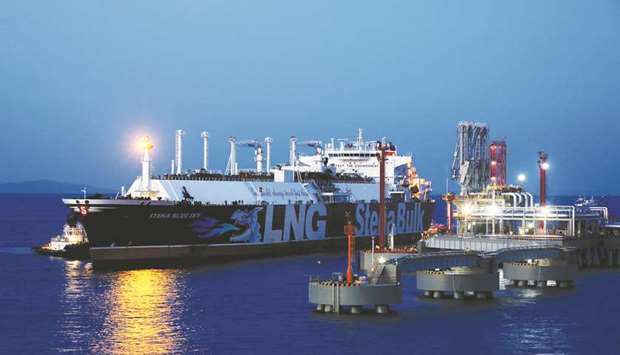The premium that Asia traditionally has paid for liquefied natural gas has tumbled as a mild winter damps demand, boosting supply in Europe to records and eroding prices there.
The trend is a threat to Russia and its dominant gas company, Gazprom PJSC, and a boost to utilities burning the fuel to generate electricity. Mild winter weather across Asia along with stockpiling earlier in the season by buyers anxious to avoid last year’s crunch sent the benchmark Japan/Korea Marker to a 17-month low.
Cargoes of LNG that usually would have gone to Asia now are landing in Europe, which at least for the moment is absorbing the excess. The sheer volume of fuel arriving into northwest European markets has pushed down prices there too and is a “big surprise” not anticipated by many market participants, according to Bart Riemens, head of gas trading at Axpo Holding AG.
“People will start realising how much gas we are swimming in,” he said.
On top of that, new production facilities, including in the US and Russia, have added to the amount of LNG looking for buyers in the market. Those flows have more than offset record-high purchases by China.
The benchmark next-month gas contract in the Netherlands, Europe’s biggest market, has lost 30% since the winter season started on October 1, trading near €19 per megawatt-hour on Thursday. It may drop another €1 or €2 over the next month or two, if other commodities and temperatures remain at current levels, Riemens said.
“There may be of course times when this may not be the case, but going forward, historical spreads JKM versus Europe are not likely,” Riemens said by telephone. “This is what we are already seeing now, and we will see more flattening of the spread, if not complete convergence for the majority of times.”
Some in the market believe the current situation is temporary and Asia will pay more for its fuel soon. The Norwegian energy company Equinor ASA acknowledges that a long-anticipated wave of LNG has finally hit but doesn’t expect it to last.
“This is the first year when we will see this wave of LNG we had expected to see,” Tor Martin Anfinnsen, senior vice president at Equinor, said in an interview in Essen, Germany. “But 2020 is the last year of the current fleet of LNG. So it is potentially very short-lived.”
There will still be imbalances and periods when either Europe or Asia become the best market for LNG, Peder Bjorland, vice president for marketing and trading natural gas at Equinor, said in the same interview.
“There will still be cargo movement from one region to another,” he said.
For now, prices are low enough in Asia that there’s little incentive to ship more cargoes there. The arbitrage between Europe and Asia is expected to remain closed throughout the year, according to analysis by BloombergNEF.
China is a big part of the shift. It built up its storage levels through the summer, lifting the gas price worldwide, then slacked off when the heating season started in October. So far, the winter hasn’t been cold enough there to absorb all the gas.
That’s added to a supply boom in Europe. Russia has been shipping gas into Europe at near record rates by pipeline, and more LNG cargoes are arriving than in the summer. Axpo anticipates additional demand for gas in power generation in Europe and increased competition between pipeline gas and LNG.

An LNG tanker is seen at the new liquefied natural gas terminal owned by Chinese energy company ENN Group, in Zhoushan, Zhejiang province (file). Cargoes of LNG that usually would have gone to Asia now are landing in Europe, which at least for the moment is absorbing the excess.
